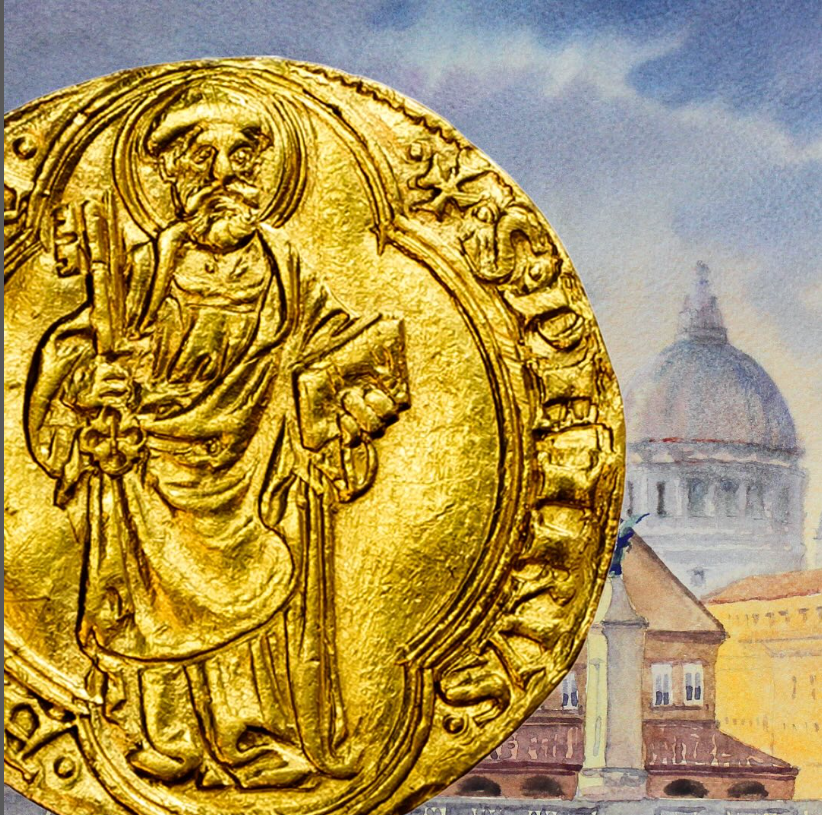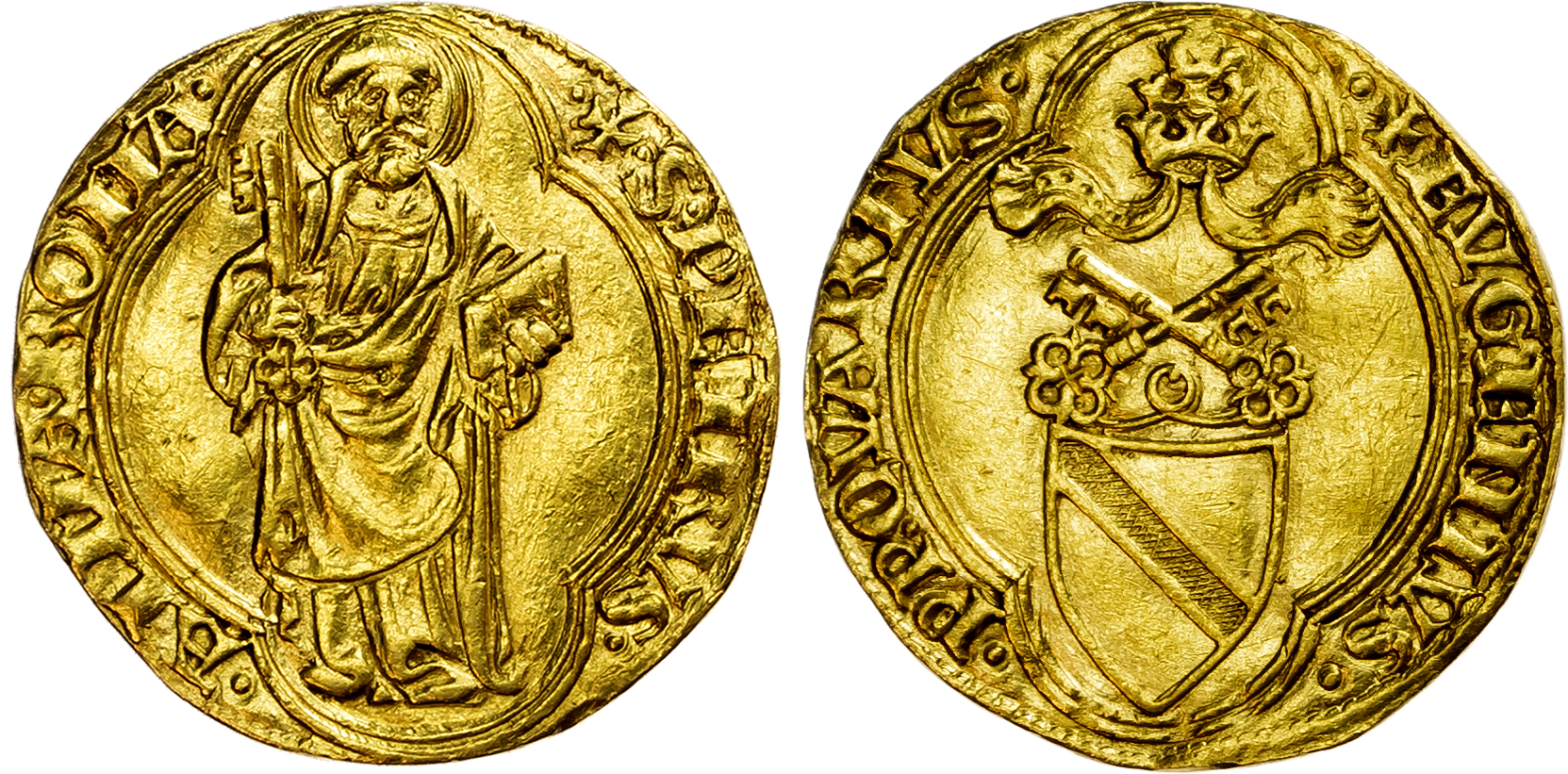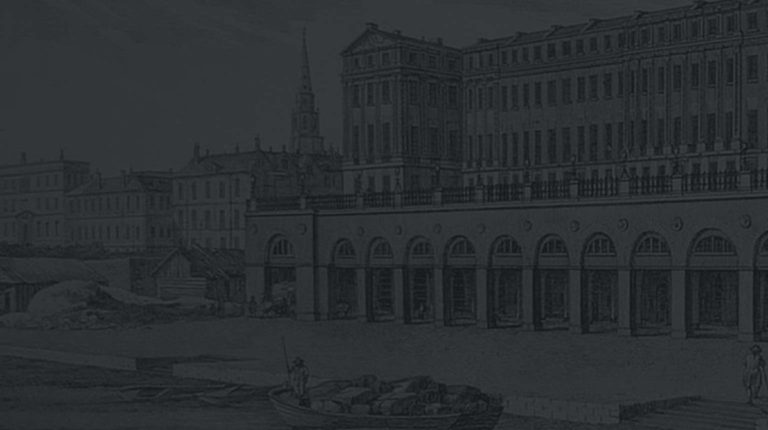The gold Ducato of the Papal States issued under Pope Eugene IV (1431–1447) is a rare and historically significant coin from the early Renaissance period. Pope Eugene IV ruled during a tumultuous time, facing conflicts with the powerful Colonna family, struggles with the Council of Basel, and efforts to reunite the Eastern and Western Christian churches. The Papal States, located in central Italy, had their own currency, often minted in Rome or other major cities under papal control. The Ducato, first introduced in Venice in the 13th century, was widely adopted across Italy for its stability and reliability in trade. The gold Ducato of Pope Eugene IV typically features an obverse depicting Saint Peter, the patron saint of Rome, often standing and holding the Keys of Heaven. The reverse usually showcases a figure of Christ or the papal coat of arms, sometimes accompanied by a cross or other religious symbols. Weighing approximately 3.5 grams, the coin followed the standard of Venetian ducats. Due to its scarcity, coins from Eugene IV’s reign, particularly gold issues, are highly desirable among collectors. Beyond its numismatic rarity, the coin symbolized papal authority and financial strength at a time when the Papacy was both a religious and political power. Serving as a trade coin, it played a vital role in commerce across Italy and beyond, reinforcing the Pope’s influence over economic affairs.

Here’s an overview of its historical context, design, and significance:
Historical Context
- Pope Eugene IV (1431–1447) ruled during a turbulent time for the Catholic Church and the Italian peninsula. His papacy was marked by conflicts with the powerful Colonna family, struggles with the Council of Basel, and efforts to reunite the Eastern and Western Christian churches.
- The Papal States, located in central Italy, had their own currency, often minted in Rome or other major cities under papal control.
- The Ducato (also called the “Ducat”) was a gold coin first introduced in Venice in the 13th century and widely adopted across Italy for its stability and reliability in trade.
Design Features
While variations exist, the gold Ducato of Pope Eugene IV typically includes:
- Obverse (front): A depiction of Saint Peter, the patron saint of Rome, often standing and holding keys (symbolizing the Keys of Heaven).
- Reverse (back): A figure of Christ or the papal coat of arms, sometimes featuring a cross or other religious symbols.
- Material & Weight: Gold, approximately 3.5 grams, similar to Venetian ducats.
Significance
- Rarity: Coins from Eugene IV’s reign are scarce, particularly gold issues, making them highly desirable among collectors.
- Political Importance: These coins symbolized papal authority and financial strength during a time when the Papacy was both a religious and political power.
- Economic Role: The Ducato was a trade coin, used in commerce across Italy and beyond, reinforcing the Pope’s influence over economic affairs.



